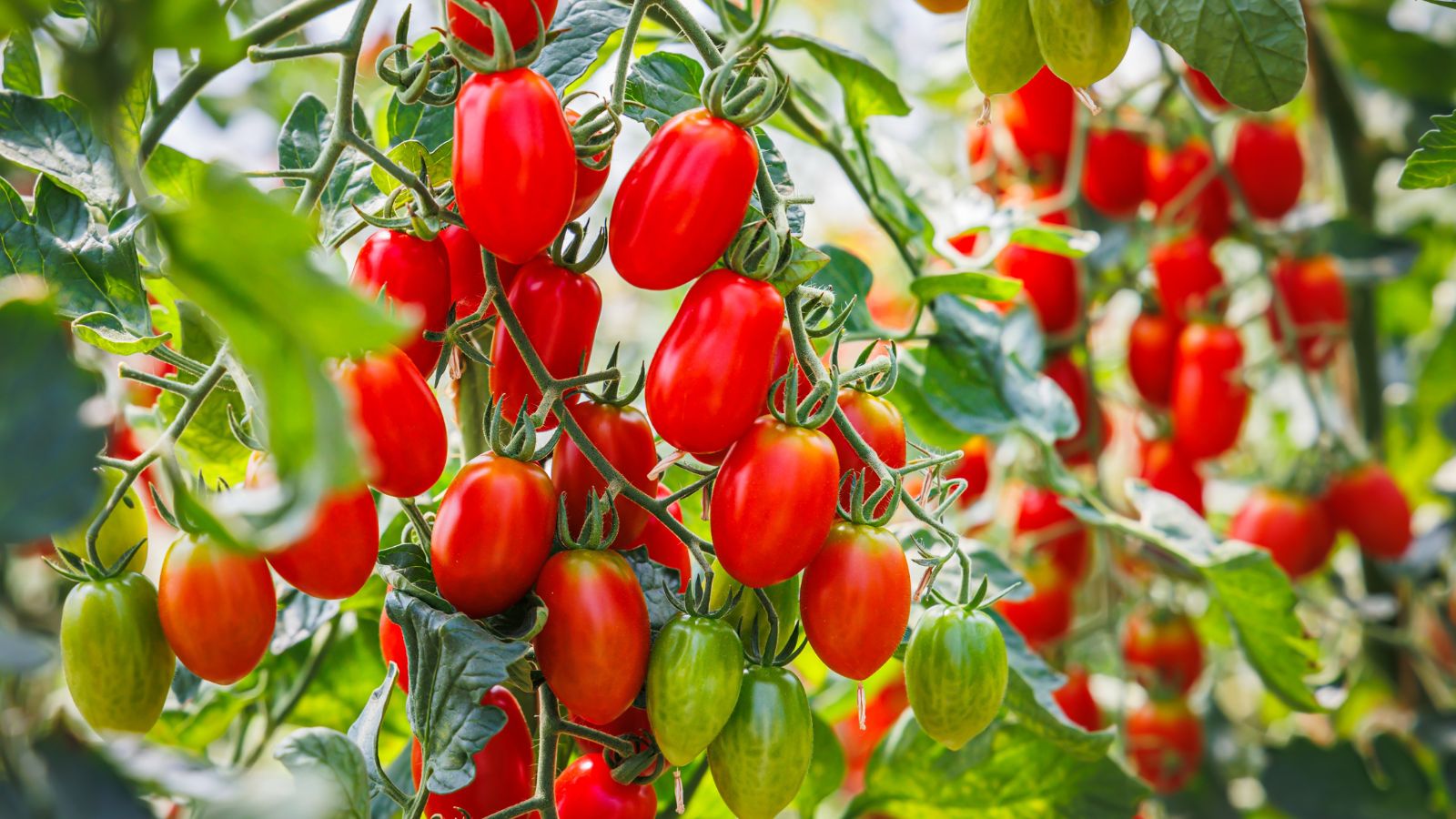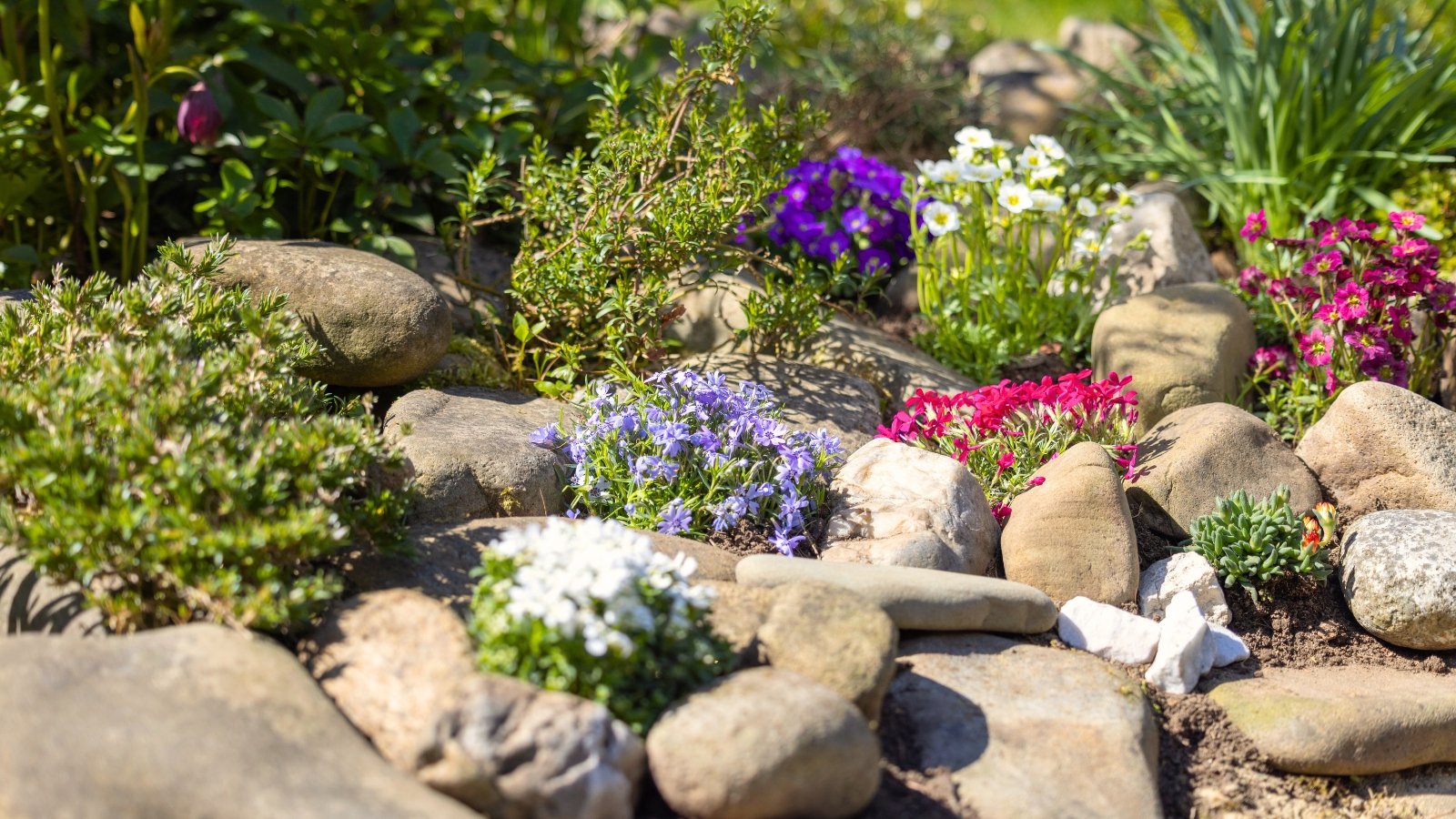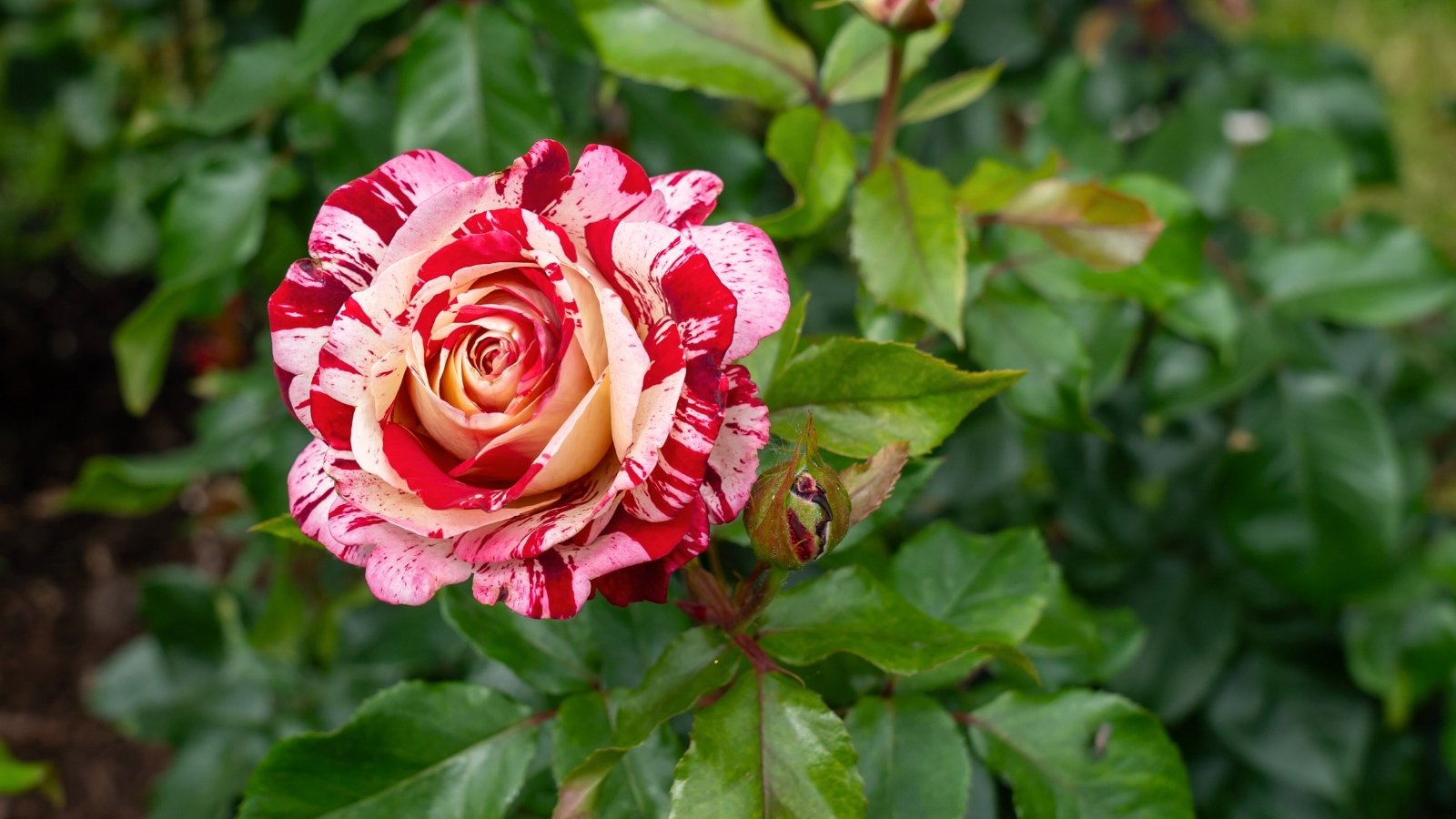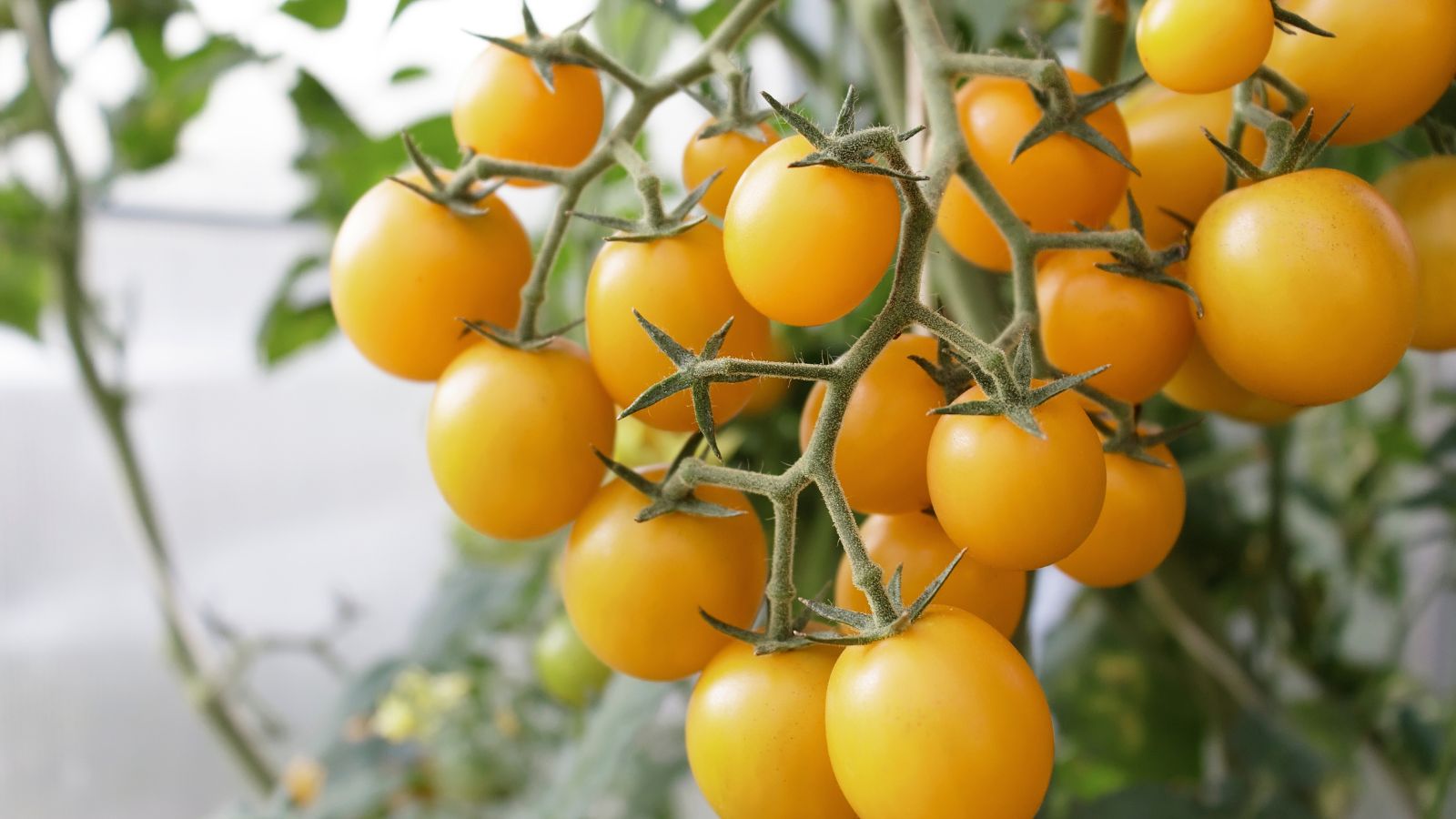How to Plant, Grow, and Care For Roma Tomatoes

There is no more popular vegetable for home gardeners than the tomato. Rich in valuable nutrients, and oh, so tasty, tomatoes are easy to grow in a wide range of climates. These flavorful, beautiful, and high-yield veggies can make even the most novice gardeners feel a sense of pride and accomplishment.
Tomatoes contain a wealth of valuable nutrients, including vitamin C, K, potassium, folate, and the antioxidant lycopene, among others. They are great for your digestion, heart health, and even have anti-aging effects! They come in shades of pink, red, yellow, orange, green, and even purple!
These members of the nightshade family are typically grown as annuals, although in tropical regions, they are often perennials. Their lovely, lobed leaves and hairy stems have a pleasantly green aroma, and the pretty yellow flowers attract bees, butterflies, and even moths.
Roma Tomato Overview


|
|
|
What Is It?
Roma tomatoes are a type of tomato sometimes referred to as paste tomatoes or plum tomatoes. They are most commonly cultivated for making sauce and stand up well to cooking in general. The most famous Roma variety, ‘San Marzano‘, is well-known worldwide for its flavor and quality. Though you can purchase the seeds to grow these, they are protected by a designation of origin certification. This means that to carry the official name, they must grow in the Campania region of Italy.
Characteristics


Roma tomatoes are easily recognizable, as they have an elongated shape similar to an egg. They mature to about three inches long and typically have bright red skin.
What makes these so suitable for canning and sauce making is their firm, meaty texture and relatively low moisture content. They have few seeds to contend with, and a sweet, tangy, slightly acidic flavor.
The skin of this type of tomato is thick and smooth, and when ripe, it should be firm. They have higher sugar and acid levels than the average variety, which makes them extra flavorful.
The plants are commonly, though not always, determinate. These plants grow to a height of three to four feet and ripen simultaneously. Some varieties are indeterminate and can grow up to 12 feet tall, producing continuously throughout the season.
Native Area


If you’re a fan of Italian food, you may be surprised to learn that tomatoes are actually native to South America. The oldest known wild tomatoes originated from the Andes region, which is now considered part of Mexico. From there, they spread throughout the Americas and then to Europe.
Planting
Roma tomatoes thrive well in both the ground and in containers. Make sure to provide them with a large container if you opt for this route. In most climates, they are summer-grown annuals.
You start seeds indoors in late winter to early spring, and transplant a couple of weeks after the last anticipated frost date, when the soil begins to warm up. They typically require support of some type, either in the form of tomato cages or trellises.
Transplanting


Wait until your seedlings have two or three sets of true leaves and are about three to four inches tall before transplanting. The soil should be warm and amended before you plant them in the ground.
Once the threat of frost has passed, take a week to harden off your seedlings, gradually acclimating them to the outdoor conditions. Plant them deeply, up to the first set of leaves. This will encourage deep root development.
Space your tomato plants about 18 inches to 2 feet apart to allow for adequate air circulation. This will reduce the risk of fungal diseases and pest infestation. After planting them, water them thoroughly to help the roots establish quickly.
Growing From Seed


You can directly sow tomato seeds in warmer climates, where the growing season is long. However, the seeds aren’t especially large or substantial, so we recommend starting your seeds indoors, four to six weeks ahead of your last anticipated frost date.
Start your seeds in loose, well-draining seed-starting mix and small nursery pots or seed-starting cells. Avoid selecting an exceptionally small cell, as you will end up with tiny seedlings that won’t grow large and strong in time for planting. Those roots need a bit of extra space.
I like to moisten my seed-starting mix ahead of time because it can be difficult for it to absorb water. This way, the seeds stick better and you don’t risk them washing away or overflowing the container along with the water.
Plant your seeds about 1/4 inch deep and place them in a warm, brightly lit space. Don’t place them in direct sun just yet. Indirect is best. The ideal soil temperature for germinating tomato seeds is between 70 and 90°F (21-32°C). It must be at least 60°F (16°C) to germinate, but warmer is better. Expect it to take from five to ten days for them to sprout.
Move your seedlings into direct sunlight after they sprout, and maintain a consistently warm temperature. When you are a week or two past the last frost date, you can harden them off by gradually exposing them to outdoor conditions over a period of one week.
How to Grow
Tomatoes are the most popular vegetable for hobby gardening for a reason: they are easy to grow. Now, they aren’t without their fair share of issues, particularly when it comes to pests and diseases. However, they tend to be great producers and resilient even in the face of the fiercest hormworms.
Light


Tomatoes like it hot and sunny. This is the weather they thrive in. They are the quintessential summer veggie. Ensure your Romas are planted in a bright, sunny spot that receives at least six hours of direct sunlight daily. More is better.
In colder climates, the more sun you can give them, the better. In hot regions, you can get away with some shade in the afternoon, and your plants will be perkier as a result.
Water


Roma tomatoes planted in containers require more frequent watering than those grown in the ground. The soil makes a significant difference in the amount of water your plants need. Loose, sandy soil will dry faster, so you’ll need to water more often.
The more sun your plants get, the faster they will dry, as well. In general, they require about one to two inches of water per week. If you get this amount of rain, you may not need to water at all. However, less than this and your plants won’t flower or produce as well.
Soil


The ideal soil for your Roma tomato plants is loose, rich, and loamy, with a slightly acidic pH. Clay tends to be heavy and dense, so amend with plenty of compost and topsoil if you have this type of soil.
Sandy soil drains well, but it requires additional nutrients to meet the significant needs of this plant. If you have sandy soil, be sure to incorporate a generous amount of compost, manure, or topsoil.
Temperature and Humidity


Roma tomato plants enjoy hot and humid weather. In warmer climates, the midday heat can be overwhelming, even for the most heat-tolerant plants. In these areas, make sure to water in the morning on hot days.
They do their best growing when the daytime temperatures are in the 70s and the nighttime temperatures are in the 60s (around 16-21°C). A humidity level of 70% is just right, but they will still grow in drier climates with enough moisture.
Fertilizing


Tomato plants are heavy feeders. They require significant nutrients, and as a result, you should not plant them near other plants that need the same. You should start by amending your soil with plenty of compost and manure to increase the natural nutrient content. These nutrients release slowly throughout the season.
Once the buds begin to form, use a fertilizer specifically formulated for tomatoes. These are low in nitrogen, slightly higher in phosphorus, and even higher in potassium. This will help it create healthy fruit. Continue to apply this formula once monthly until the plant finishes fruiting for the season. If you’re working with a liquid, apply every other week diluted to half strength.
Maintenance


There is substantial maintenance involved in growing perfect Roma tomatoes. In fact, you should do a little maintenance every few days when checking on your garden. It’s really better to do it this way than to check less often and do a lot of pruning at once.
When your plants are about six to eight inches tall and have at least three sets of true leaves, pinch off the lowest set. As the plant continues to grow, and until it flowers, continue to pinch off the lower leaves where no flowers will form.
If your tomato plant begins to flower before the main stem is strong and sturdy, pinch off the flowers and allow the plant to grow stronger before it fruits.
Regularly remove any yellow or brown foliage, as well as any side shoots that won’t produce fruit. Remove non-fruiting branches that cross the middle of the plant to improve airflow and reduce the risk of fungal diseases.
Propagation


You can propagate Roma tomato plants with cuttings, but it’s not the most popular method for growing them. It’s easy to grow these from seeds, which is the most common method. Growing from cuttings can be faster for some plants, but because tomatoes grow so quickly, it’s not usually worth the trouble.
To root cuttings:
Take cuttings from side shoots or suckers. They should be about six to eight inches long. You can root your cuttings in water or moist soil, ensuring that you maintain moisture throughout the process.
Place your Roma tomato cuttings in water or soil in a bright, but indirect, location with sunlight. Keep them warm until roots form. It will take about two weeks in water, and slightly longer in soil. However, the roots will be stronger if you root them in soil.
Harvesting and Storage


When harvesting your Roma tomatoes, timing is a matter of personal taste. If they are mature green, they will continue to ripen if left out on the counter. Some gardeners prefer to wait for the breaker or blush stage when the red color is just beginning to show.
If you want to wait for the breaker stage, allow the fruits to get to about 40-60% of their full color before ideal picking. The outer skin should be shiny and taut, indicating maturity.
Harvest with a pair of snips or by hand. If using your hands, grasp with your whole hand and pull lightly while twisting. Don’t pull too hard or you risk damaging the fruit.
For optimal flavor and longevity, let your tomatoes ripen on the counter at room temperature. Romas are excellent for canning and saucemaking. Be sure to allow them to reach peak ripeness before processing them for long-term storage.
Common Problems
Roma tomatoes have many enemies, which contributes to their reputation for being high-maintenance. It’s essential to inspect them regularly so that when issues arise, they don’t compromise your entire crop.
Pests


When it comes to pests, it seems like everything likes to eat tomato plants. Just today, I encountered armyworms and pinworms on one of mine, and I’m certain I’ll run into more later in the season. Most of these are minor if you catch them in time. I prefer manual removal to insecticides, as these are plants you eat.
Aphids and whiteflies may also be a problem, as well as spider mites. Proper care and moisture prevent their proliferation, and keep them from taking hold of your plant and causing serious damage. Use a strong stream of water from a hose in the morening to clear out aphids and mites. Whiteflies are easily controlled with insecticidal soap.
Remove affected leaves as soon as you notice them. The plant doesn’t need all that foliage to make fruit, and in fact, this thinning of foliage will help the plant apply more energy to the fruit, which is exactly what we want. For serious infestations, a mist of neem oil in the late afternoon will help without harming the pollinators.
The most serious pests are tomato hornworms. These are moth larvae, and they are big, bad enemies of your Romas. They can defoliate the plants and also go after the fruit. If you see these guys, pick them off as soon as possible. Or plant an array of flowering plants in your garden that attract their primary wasp predators.
Diseases


There are also several diseases that you may encounter when growing Roma tomatoes, many of which are fungal. Proper watering and adequate air circulation are essential for preventing these issues. In the presence of most fungal diseases, copper-based fungicides may be the most effective defense. They aren’t always effective, and prevention is better.
I could write several articles about the diseases that affect these plants. Bacterial, viral, and fungal, there are more of them than we can cover in this space alone. Let’s discuss the most serious issues, though, so that you don’t end up in a bad situation long term.
Wilt: This disease is serious because it remains in the soil for an extended time and can destroy future crops. The bacterium proliferates in warm, moist conditions, turning the interior of the stems into a slimy mess. The plant essentially collapses or wilts entirely before it has time to lose its green color. Remove the plants and leave the area alone for the year. Next year, plant resistant crops in this spot, such as corn or beans.
Early or Late Blight: These diseases survive in the soil, so it’s essential to use resistant cultivars and maintain proper spacing between plants. Rotate crops every year; don’t plant the same thing in the same place year after year. Foliage will show the first signs of yellow patches and then brown in the center. It may eventually destroy all the foliage, ultimately claiming the entire plant.
Other moderately serious diseases are usually manageable, but are best controlled ahead of time. Practice good plant hygiene, and most importantly, avoid overhead watering, as many diseases are spread this way.
Frequently Asked Questions
Basil is the number one best companion for Roma tomatoes, both in and outside of the kitchen!
Ripe tomatoes are fine for your pets, but the plants and foliage are toxic.
It could be due to intense heat, dehydration, or a fungal or bacterial infection.






